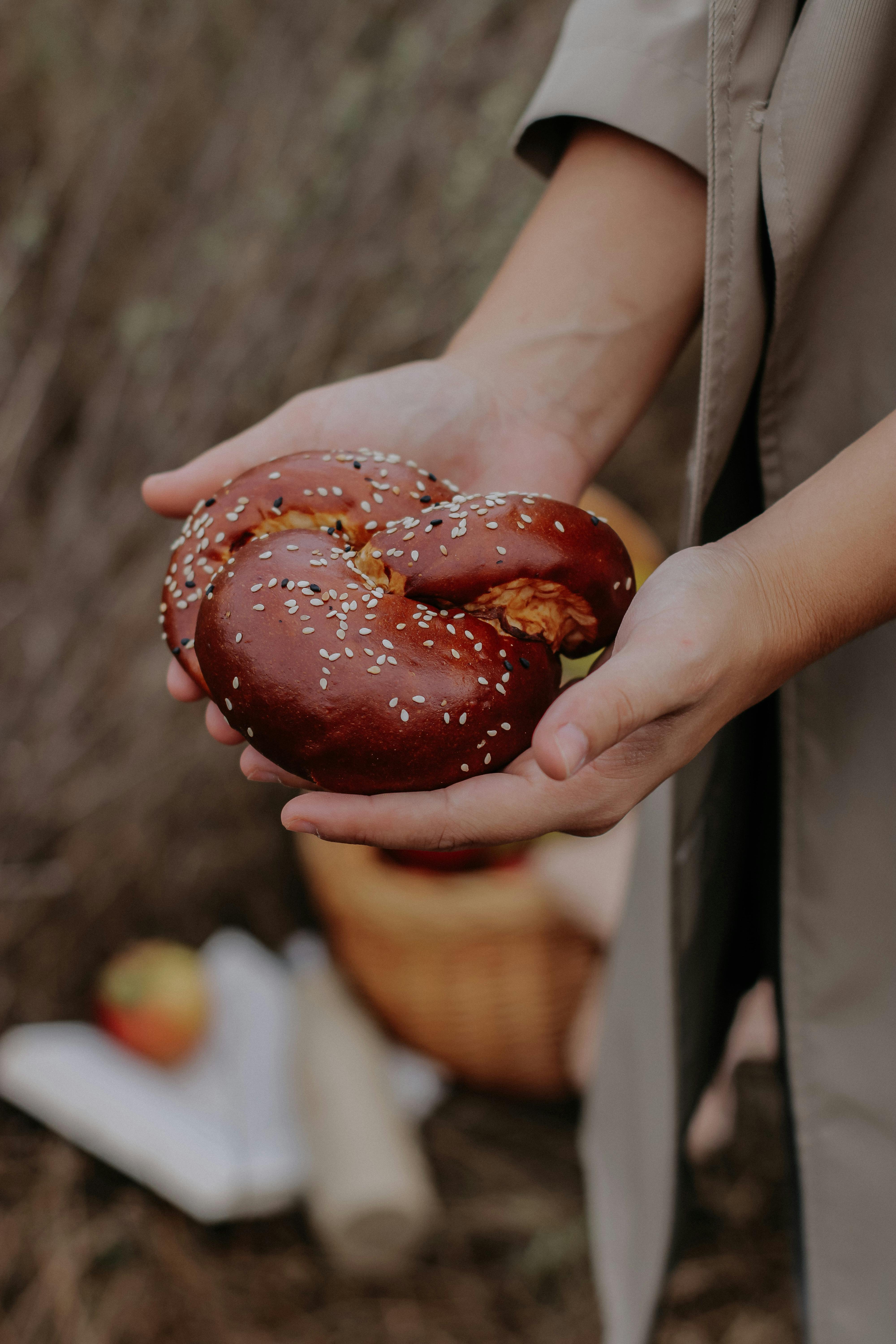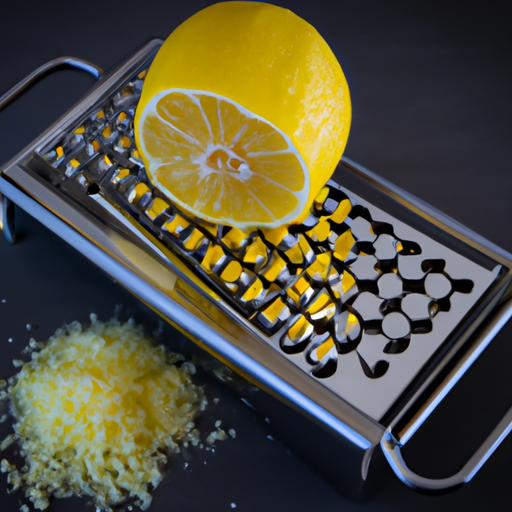In the world of cooking, having the right tools can make all the difference. And when it comes to grating and zesting, there is a science behind it. From the fine shreds of Parmesan cheese to the delicate zest of a lemon, grating and zesting can elevate the flavors of your dishes. But with so many types of graters and zesters out there, it can be overwhelming to choose the right one for your needs. That’s where Tastepan.com comes in. We’ve done the research and testing to bring you the ultimate guide to the science of graters and zesters. Prepare to discover the types and uses of these essential kitchen tools, and take your culinary creations to new heights.

Types of Graters
Box Grater
A box grater is a versatile kitchen tool that is commonly used for grating various types of food. It consists of four sides, each with a different grating surface. The sides usually include a coarse grater, a medium grater, a fine grater, and a slicer. This allows you to choose the desired size and texture of the grated food.
Microplane Grater
A microplane grater is known for its ultra-sharp blades and small size. It is perfect for finely grating hard cheeses, spices, and citrus fruits. The fine edges of the blades create delicate shavings, which is ideal for recipes that require a subtle flavor infusion or garnish.
Rotary Grater
A rotary grater is a hand-cranked device that makes grating effortless and efficient. It typically has interchangeable drums with different grating sizes to cater to various needs. The rotary motion of the grater ensures a consistent and even grating, making it a popular choice for grating large quantities of ingredients.
Flat Grater
A flat grater, also known as a handheld grater, is a basic and commonly used grating tool. It consists of a flat surface with sharp, raised blades that are perfect for grating cheese, vegetables, and spices. It is compact, easy to use, and easy to clean, making it suitable for everyday kitchen tasks.
Handheld Grater
A handheld grater is a small, portable grating tool that is designed for convenience. It usually has a single grating surface and a handle for easy gripping. This type of grater is ideal for small grating jobs, such as zesting citrus fruits or grating small amounts of cheese or spices.
Uses of Graters
Grating Cheese
One of the most common uses of a grater is for grating cheese. Whether you’re adding a sprinkle of grated cheese to your pasta or topping off a homemade pizza, a grater is an essential tool for achieving the perfect texture and melt.
Zesting Citrus Fruits
Zesting citrus fruits, such as lemons, limes, and oranges, adds a burst of tangy flavor to recipes. A grater with fine blades, such as a microplane grater, is perfect for gently scraping off the outer layer of the fruit’s skin to collect the fragrant zest.
Grating Vegetables
Grating vegetables can be a great way to add texture and flavor to your dishes. Carrots, zucchini, and potatoes can be easily grated using a box grater or a flat grater. Grated vegetables can be used in salads, stir-fries, or even as a base for vegetable fritters.
Shredding Chocolate
Grating or shredding chocolate is a common technique used in baking and dessert making. By using a grater with fine blades, you can create delicate shavings of chocolate that can be used for garnishing cakes, cookies, and other sweet treats.
Grating Spices
Grating spices, such as nutmeg, cinnamon, or ginger, helps release their flavors and aromas. A box grater or a microplane grater with a fine grating surface is perfect for creating a fine powder or shavings of spices to enhance the taste of your dishes.

Types of Zesters
Citrus Zester
A citrus zester is specifically designed for zesting citrus fruits. It usually has a narrow, elongated shape with small sharp holes or blades. This type of zester is perfect for delicately removing the zest from citrus fruits without getting any of the bitter pith.
Parmesan Zester
A Parmesan zester is a specialized zesting tool specifically designed for grating hard cheeses like Parmesan. It usually has sharp, pointed blades that can easily grate hard cheese into fine shavings.
Chocolate Zester
A chocolate zester is similar to a Parmesan zester but designed specifically for grating chocolate. It typically has fine blades that can create delicate shavings of chocolate for garnishing desserts.
Spice Zester
A spice zester is a versatile zesting tool suitable for grating a variety of spices. It usually has a multipurpose grating surface that allows you to grate spices like nutmeg, cinnamon, or ginger into fine powder or shavings.
Uses of Zesters
Zesting Citrus Fruits
Zesters are primarily used for zesting citrus fruits. Whether you need a hint of citrus flavor in your baked goods or want to add a tangy twist to your cocktails, a citrus zester is the perfect tool for delicately grating the zest from lemons, limes, and oranges.
Garnishing Desserts
Zesters are also commonly used for garnishing desserts. By using a chocolate or Parmesan zester, you can create elegant shavings of chocolate or hard cheese to add the finishing touch to your cakes, pies, or ice cream.
Adding Flavors to Dishes
Zesters are excellent for adding flavorful accents to various dishes. The zest from citrus fruits can brighten up salads, seafood, or poultry dishes, while grated spices can infuse your recipes with aromatic flavors.
Grating Hard Cheeses
In addition to citrus fruits and spices, zesters can be used to grate hard cheeses, such as Parmesan or Pecorino Romano. The sharp blades of a Parmesan zester can easily create fine shavings of hard cheese to be used in pasta dishes, salads, or risottos.

Factors to Consider when Choosing a Grater
Material
When choosing a grater, consider the material it is made of. Stainless steel graters are durable and resistant to corrosion, while plastic graters are lightweight and easy to handle. Ceramic graters are also an option for those looking for a non-metal alternative.
Design
Graters come in various designs, such as box graters, flat graters, and handheld graters. The design should be comfortable to hold, with a stable base for safety. Consider the design that best suits your needs and preferences.
Size
Graters come in different sizes, from small handheld graters to large box graters. Consider the amount of food you usually grate and the storage space in your kitchen when choosing the size of your grater.
Ease of Cleaning
Cleaning graters can be a hassle, especially if food gets stuck in the blades. Look for graters that are easy to clean, with removable parts or dishwasher-safe options for convenience.
Versatility
Consider the versatility of the grater. Some graters have interchangeable blades, allowing you to grate food in different sizes and textures. This can be useful if you often work with a variety of ingredients.
Factors to Consider when Choosing a Zester
Blade Type
Zesters come in different blade types, such as small holes or sharp points. Consider the type of zesting you will be doing and choose a zester with blades that suit your needs.
Handle Grip
A comfortable handle grip is important when choosing a zester. Look for one with a non-slip handle that provides a secure grip, especially when working with hard or slippery ingredients.
Ease of Use
Consider the ease of use of the zester. It should be easy to maneuver and require minimal effort to collect the zest or grate the desired ingredients. Look for zesters with sharp blades that glide smoothly for efficient zesting.
Cleaning Method
Check the cleaning method of the zester. Some zesters are dishwasher-safe, while others require hand washing. Choose a zester that fits your cleaning preferences and routines.
Durability
Durability is an important factor to consider when choosing a zester. Look for zesters with sturdy construction and blades that are resistant to dulling or rusting.
Proper Techniques for Using a Grater
Secure Grater on a Stable Surface
Before using a grater, make sure it is securely placed on a stable surface to prevent accidents. A stable base or using a non-slip mat can provide added stability and ensure the grater stays in place while you grate.
Hold the Food Correctly
When grating food, hold it securely to prevent injuries. Use a firm grip and keep your fingers away from the blades. You can use a vegetable holder or a kitchen towel to hold the food while grating.
Use Proper Strokes
For efficient grating, use smooth up-and-down or back-and-forth strokes. Apply consistent pressure while keeping the food in contact with the grating surface. Avoid rapid or jerky motions that may cause the food to slip or unevenly grate.
Mind Your Fingers
Always be cautious of your fingers when using a grater. Keep your hand at a safe distance from the blades and use a gentle, controlled motion. Consider using a finger guard if you are unfamiliar or uncomfortable with the grater.
Proper Techniques for Using a Zester
Hold the Zester Correctly
To use a zester, hold it firmly but gently with your dominant hand. Position it at an angle to the fruit or ingredient you are zesting to allow the blades to smoothly glide across the surface.
Apply Gentle Pressure
When zesting, apply gentle pressure with the zester to scrape off the zest without digging too deep into the fruit. The goal is to remove the fragrant outer layer of the fruit’s skin while avoiding the bitter pith.
Use Short Strokes
Zesting is most effective when done with short, quick strokes. This helps prevent the zester from getting clogged and allows for more control and precision while zesting.
Avoid the Pith
When zesting citrus fruits, take care to avoid the pith, which is the white, spongy layer beneath the zest. The pith can add a bitter taste to your dishes, so it’s important to grate only the colorful, aromatic zest.
Cleaning and Maintenance of Graters
Rinse Immediately After Use
After using a grater, rinse it immediately with warm water to remove any leftover food particles and prevent them from drying and hardening on the blades.
Use a Brush or Scrubber
For thorough cleaning, use a brush or scrubber to gently scrub the grater, paying attention to the areas between the blades. This helps remove any food residue that may be stuck.
Dishwasher-Safe Graters
If your grater is dishwasher-safe, you can conveniently place it in the dishwasher for a deep clean. Make sure to check the manufacturer’s instructions to ensure your grater is suitable for dishwasher use.
Preventing Rust
To prevent rust on metal graters, thoroughly dry them after washing and store them in a dry place. If rust spots appear, they can be removed by scrubbing with a mixture of baking soda and water.
Cleaning and Maintenance of Zesters
Clean Immediately After Use
After zesting, clean the zester immediately to prevent the zest or debris from drying and sticking to the blades. Rinse it with warm water to remove any residue.
Use a Toothbrush or Soft Cloth
To clean a zester thoroughly, use a toothbrush or a soft cloth to gently scrub the blades. Pay attention to the small holes or blades to ensure all the zest is removed.
Avoid Dishwashers
Most zesters are not dishwasher-safe due to their delicate blades. Avoid placing them in the dishwasher, as the high heat and harsh detergents can damage the blades or handle.
Storing Properly
Store your zester in a safe place where the blades are protected to prevent accidents and to maintain the sharpness. Consider using a blade cover or storing it in a drawer away from other sharp objects.
In conclusion, graters and zesters are essential kitchen tools that can make your cooking experience more efficient and enjoyable. By understanding the various types, uses, and factors to consider when choosing, as well as proper techniques and cleaning methods, you can maximize the functionality and longevity of these versatile tools. Whether you’re grating cheese, zesting citrus fruits, or adding flavors to your dishes, a high-quality grater or zester is a worthwhile investment for any home cook or professional chef.

